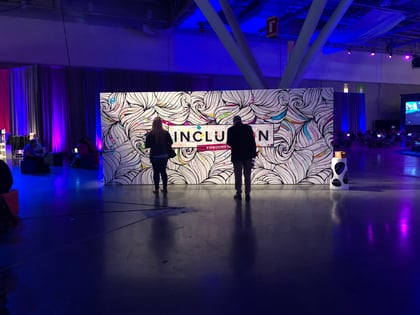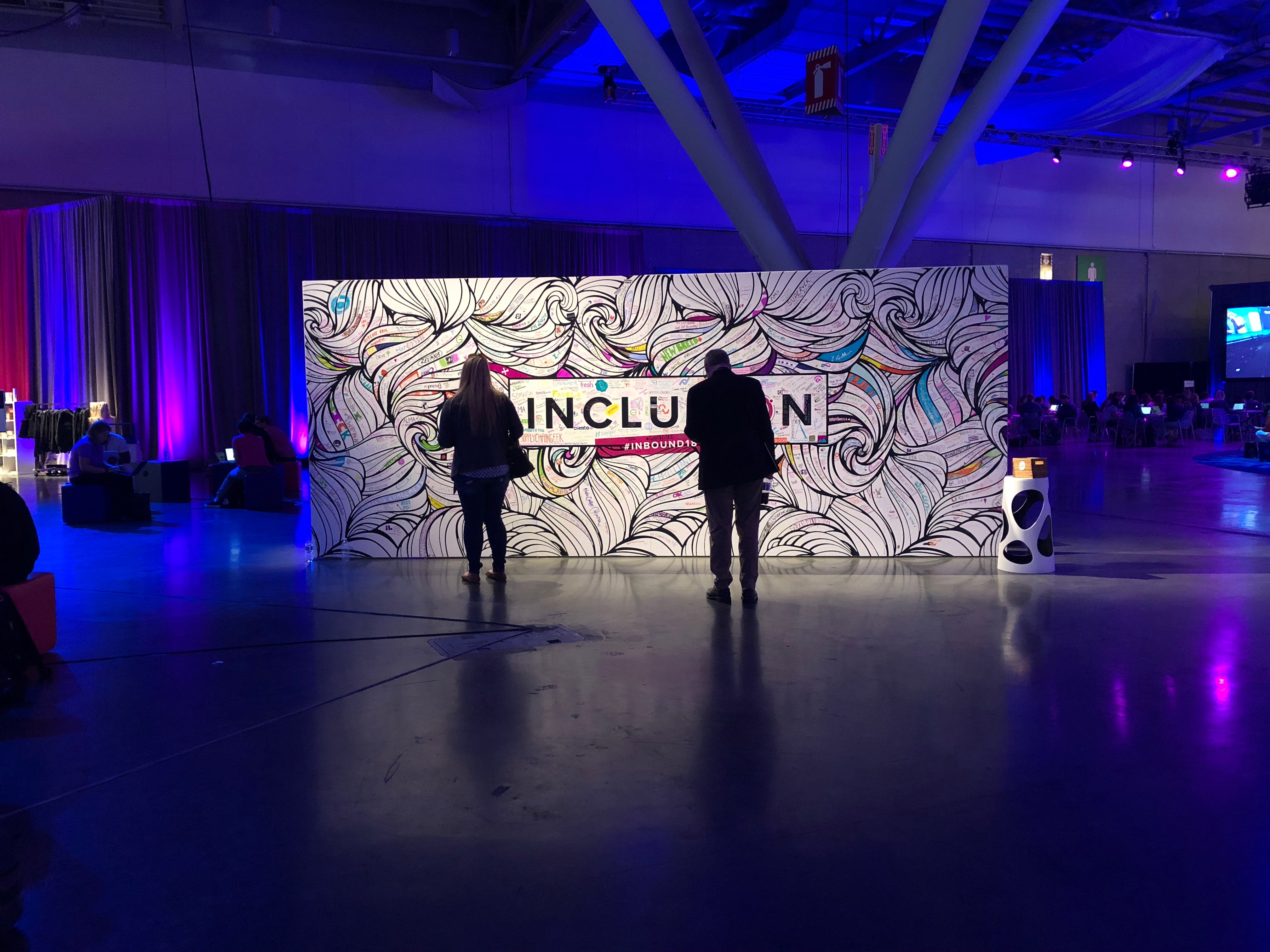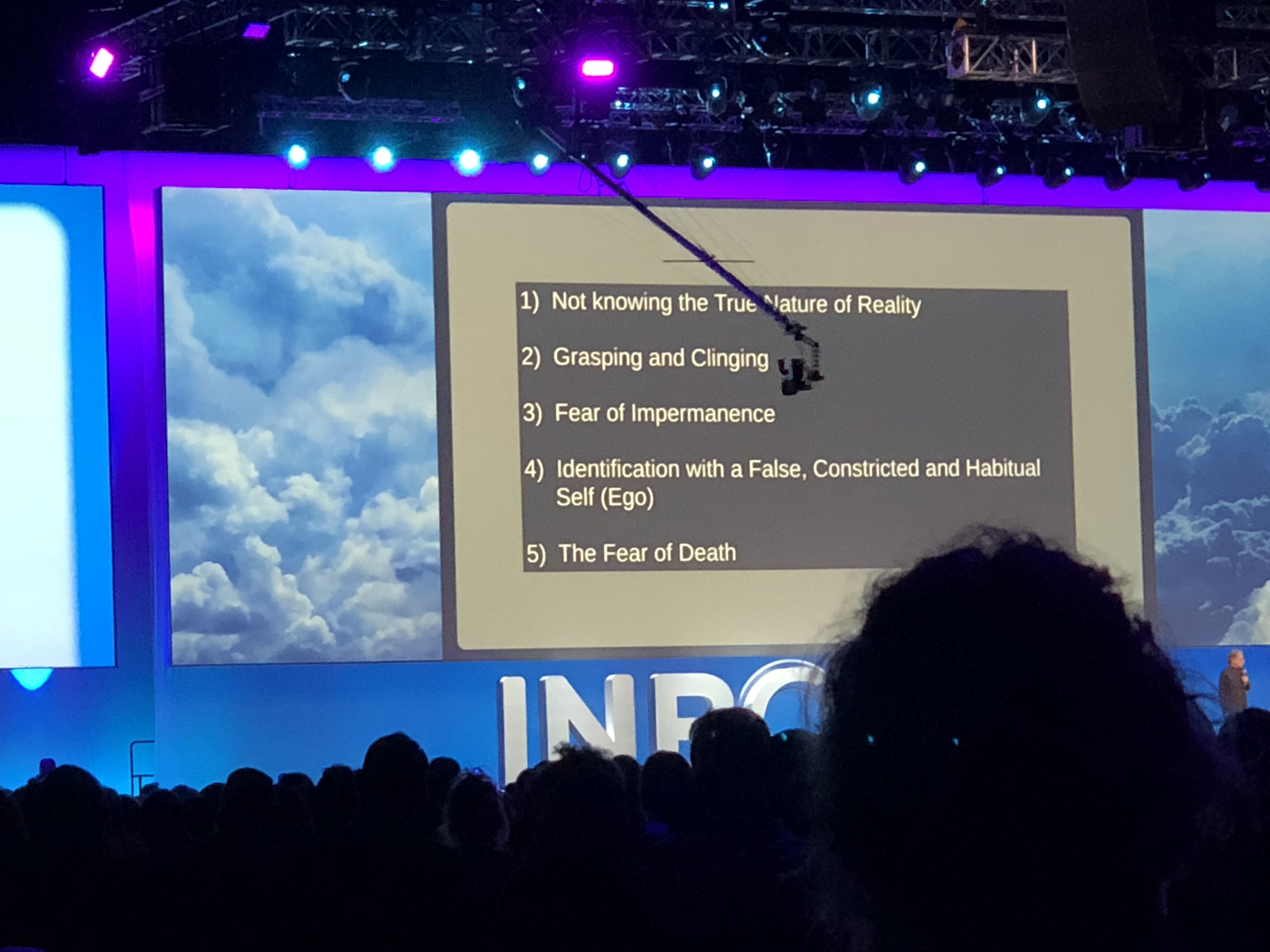The air is too stale, I decide. That's what it was. However, as soon as I hear a fellow passenger speak up, I realize what the actual problem is.
"Excuse me, sir," someone says, trying to get the driver's attention. "Can you turn on the air conditioning?"
The shuttle driver doesn't respond at first. When the passenger does get his attention, the driver mumbles and is a little too soft spoken. From where I'm sitting (I'm half deaf in one ear), I can't quite make out if the challenge is a language barrier or a consequence of being mild-mannered.
However, one thing is obvious. With the accumulating downtown Boston traffic and an overcrowded bus full of hot, increasingly frustrated marketers, our driver is overwhelmed.
At the time, it wasn't easy to relate to the driver. Even after he switches it on, the A/C doesn't seem to work. Due to a shortage of seats, well-dressed, yet sweaty marketers are standing in the bus aisle, holding on to whatever they can to stay stable.
It's taking over 45 minutes to go three miles, with a lot of abrupt stops. And when we get to the morning keynote, we're ten minutes late.
While it wasn't enjoyable or particularly revelatory at the time, now, I see the stressful commute for what it was: a valuable story. And at Inbound 2018, it's all about learning how to tell better, more impactful stories, even if they're not pleasant.
The Main Inbound Marketing Conference 2018 Content Takeaway
One of the most prevalent themes of Inbound 2018 so far is the need to tell better stories in our content. From breakout sessions like Story Fuel Founder Melanie Deziel's How to Think Like a Journalist and Create Better Brand Stories to the selection of speakers like Shonda Rhimes and Ronan Farrow, HubSpot wants us to know that storytelling is critical to keep our customers engaged.
But it's not news, right? We all know that we need to make more engaging content. That's why it's such a head scratcher that some sessions still focus on discussing how important content marketing is instead of how to develop it. The sessions that explain the how only seem to skim the surface, with the same tips, the same examples, and the same takeaways.
Of course, there are exceptions (feel free to @ me with your favorites), but frankly, we need some new tips. Here are some of the tactics I've heard buzzing around Inbound so far, and how you can spice them up and make them more actionable.
#1: Create Customer-Centric Content
When a marketer tells you to create customer-centric content, brace yourself for a conversation about buyer personas and collecting feedback. While yes, surveying and having conversations with your customer and maintaining new buyer personas is critical; it's also essential to stop and think about what customer-centric means for your specific customer.
For instance, the bus driver I mentioned in the introduction is someone's customer. Likely, he's the customer of many brands. And I'd be willing to bet that the brands who target him don't know that he spends long, exhaustive hours driving through the city. They don't know that when he gets home, he might unwind by switching on the TV, or on his laptop to play Candy Crush (which is still a thing, apparently.)
You figure out what customer-centric means for him by breaking down his day, his priorities, and his potential roadblocks. Get specific. You could identify every way your product or service would give him some relief, joy, or direction. You would recognize the most likely opportunities for him to find your solution. You would quickly eliminate anything he wouldn't find interesting, or bypass because it's not intriguing enough to hold his attention.
Then, you would tailor your content to fit his preferences in format, length, channel, etc. You would create something for him. Something that feels like a treat, like a respite from all the other clutter out there.
tl;dr: Anything that isn't a gift or a godsend for your customer, that's formatting and created per their preferences, stops short of customer-centric.
#2: Feel Empathy For Your Customer
If I had $5 for every time I was told to be empathetic.... you get it. We all know that it's essential to gain empathy for our customers. But I'm realizing, at Inbound especially, that compassion needs to extend beyond our customers. As marketers, we need to feel empathy for all people, such as the families, friends, co-workers, and circles that surround our customer. We need to care about anyone that touches their lives.
I think developing genuine empathy for other people makes great marketers, writers, videographers, CEOS, and salespeople. When you can feel genuine empathy for people without any expected return, you will intrinsically become more authentic in support of your customers. You can become better at seeing them as a human, as someone with day-to-day challenges and concerns.
How do you develop this skill? When you see the girl desperately trying to find a plug to charge her phone before an Inbound session, unplug your phone and give her some juice. When you're in line for appetizers at Club Inbound, and a string of hungry marketers forms behind you, don't take the rest. Despite the bumpy journey, thank your exasperated bus driver for the ride.
tl; dr: By strengthening your ability to be empathetic when there's no benefit to you, you can become better at creating content that supports your customer.
#3: Video Content, NOW!
Yes, we all need to get into video. But I feel the "JUST DO VIDEO ALREADY" cattle call is counterproductive and slightly inconsiderate to a lot of marketers. Because investing in video marketing is a significant, scary risk for a lot of people. They need to bet the house (a substantial portion of their time, resources, and budget) on making video work. That's a lot of pressure, even for marketers with some video experience.
I'm not suggesting that we slow down and re-evaluate whether making videos is essential. I suggest we slow down. As marketers and thought-leaders, it's our responsibility to evaluate how video is useful for our customers, beyond the increasing pressure to do it because of statistics. We can do this by identifying why our customers need video.
Is it because they can learn more about a product, service, or feature by watching a video?
Is it because a salesperson can personalize a response about their specific challenge or problem?
Is your product too complicated to explain in an elevator pitch?
If you can nail down the exact reasons why video will help your customer, you can form a stronger content strategy. Additionally, when thinking through your channel strategy, go beyond checking off boxes. If you're planning on sharing video on Facebook, consider how your customer will find that video (News Feed, on your page), what the video needs to do to hold their attention, where they will watch it (on their morning commute, on their lunch break) and take all of that into consideration.
From that emerges a more realistic and customer-centric video strategy.
tl;dr: You can't build a video marketing plan based on the belief "it will work."
#4: Self-Awareness and Vulnerability Are Everything
There's a lot of talk about being vulnerable at Inbound. However, it's easy to forget that opportunities for self-awareness are often in plain sight, and come to us when we expect it the least.
For instance, I found Deepak Chopra's keynote invigorating. But it wasn't for everyone, and I noticed a lot of people got up and left during the session. I can understand why - his beliefs and approach aren't the typical inbound material, but isn't that kind of the point?
If you walked out because you didn't care for the delivery of that message, you might have missed an insight that was bold, different, and uncomfortable. And those are real opportunities for vulnerability.
As marketers, we need to learn to tune in when we want to tune out. That skill will be invaluable for finding inspiration in unexpected places, developing new skills, and creating better stories.
tl;dr: You can't be vulnerable without being uncomfortable.
The Top Takeaway From Inbound (So Far)
The hot, sweaty bus is a relatable story. When reading about it, you can feel the dry air. Even reading that tests your patience. The experience and the story inspire an unpleasant, yet strong reaction. It's all in detail and the discomfort, the reflection and the emotion around the event. These are the kind of stories that cut through the static, the type you may expect to hear anywhere but a B2B, B2C, or sales and marketing blog. And that's the type of content we should all strive to create.
My challenge for every marketer for the rest of this year is to create content that helps the customer forget you're a business. Instead, choose to be an educational, innovative publication that's a go-to resource for relatable stories, incredibly helpful information, and minimal brand updates. If you're ready to create stories and messages that cut through the static, consider hitting up Lean Labs. With our Game Plan Offer, we can determine whether or not we're a good fit, or point you in the direction of a partner who is.






